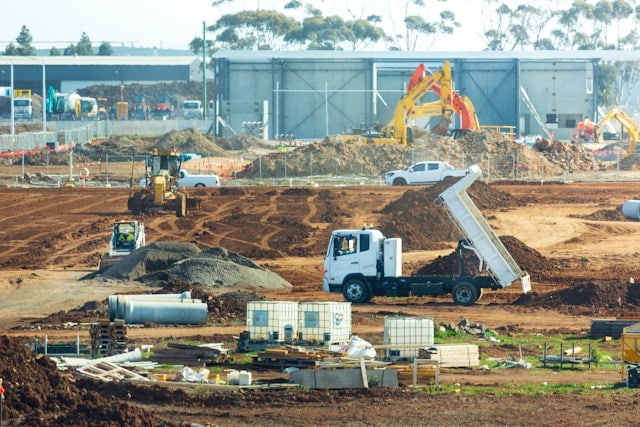What’s the Latest on Self-Healing Concrete and Its Usage in UK Infrastructure?

As you navigate the dynamic landscape of the construction industry, one concept that has been gaining traction is self-healing concrete. This revolutionary material is touted for its potential to drastically change the future of construction, with the promise of reducing maintenance costs and enhancing the longevity of infrastructure. But what exactly is self-healing concrete and how is it being implemented in the UK? This article delves into the science behind this material, its current market status, and the potential it holds for the future of construction.
The Science Behind Self-Healing Concrete
In the realm of civil engineering, concrete has long been a go-to material. However, the recurring issue of cracks forming and the resulting repair costs have driven researchers to seek solutions. Enter self-healing concrete.
A lire également : How to Create Effective Social Media Strategies for UK Non-Profit Organizations?
This innovative material, developed by a team of researchers from the University of Cardiff in the UK, leverages the power of bacteria to heal cracks. These bacteria, encapsulated in tiny capsules made from a water-based gel, are mixed into the concrete. When a crack forms, the capsules break, releasing the bacteria. These bacteria then consume the nutrients in the gel to produce limestone, effectively filling and sealing the crack.
The beauty of this approach lies in the fact that the healing process is based completely on natural processes. Additionally, these bacteria can remain dormant for up to 200 years, making them ideal for long-term concrete stability.
En parallèle : Living in Portugal: Cultural differences to be aware of
The Global Market Status
As you might expect, the advent of self-healing concrete has stirred significant interest in the global construction market. The current market size for self-healing materials is projected to reach USD 1.1 billion by 2025, based on a forecast from Markets and Markets. Concrete, being a significant component of this share, promises a substantial growth trend.
While the broader self-healing materials market incorporates other products such as coatings and polymers, the unique capability of concrete to sustain heavy loads makes it a prime candidate for usage in critical infrastructure.
Self-Healing Concrete in the UK’s Infrastructure
In the United Kingdom, self-healing concrete is already making waves in the construction sector. A number of pilot projects have been undertaken to assess its feasibility in real-world settings.
One notable project is the A465 road in Wales, which utilized self-healing concrete in its construction. Observations from this project have been promising, showing reduced crack formation and significant potential for cost savings.
Additionally, the UK government’s Engineering and Physical Sciences Research Council has initiated a project aimed at further developing self-healing concrete technologies. This commitment underscores the government’s recognition of the potential of this material in transforming the country’s infrastructure.
Future Outlook of Self-Healing Concrete
It’s clear that self-healing concrete has a promising future, but what does this mean for you in the construction industry? Firstly, adoption of this material could result in significant cost savings. Maintenance and repair costs constitute a hefty chunk of infrastructure budgets, and self-healing concrete has the potential to drastically reduce these.
Secondly, the use of self-healing concrete can also contribute to sustainability efforts. The production of regular concrete is responsible for about 8% of global CO2 emissions. By extending the lifespan of concrete structures and reducing the need for replacement, self-healing concrete can help in combating climate change.
Conclusion
While self-healing concrete is still in its early stages of adoption, its potential for revolutionizing the construction industry is undeniable. It offers a viable solution to the persistent problem of concrete degradation, promising cost savings and sustainability benefits. As we continue to witness advancements in this field, it’s clear that self-healing concrete is poised to become a game-changer in infrastructure development.
The Role of Bacteria and Healing Agents in Self-Healing Concrete
One of the key components that make self-healing concrete a reality is the use of bacteria and other healing agents. In particular, the bacteria used in this process are of a type known as Bacillus Pseudofirmus and Sporosarcina pasteurii. These bacteria are highly resistant to harsh conditions, including the alkaline environment of concrete.
However, bacteria on their own cannot seal cracks in concrete. They require a healing agent, often an organic compound such as calcium lactate, to produce the limestone needed to fill the cracks. This compound is mixed into the concrete along with the bacteria. When a crack forms and the capsules break, the water that seeps in triggers the bacteria to consume the calcium lactate, leading to the production of calcium carbonate or limestone that seals the crack.
The use of bacteria and healing agents in the creation of self-healing concrete is a significant leap in civil engineering. This approach not only addresses the issue of concrete degradation but also offers a solution that is inherently sustainable.
The Market Landscape: Asia Pacific and Global Self-Healing Concrete Market
Currently, the global self-healing concrete market is witnessing a steady growth, with a projected market size of USD 1.1 billion by 2025. A significant share of this growth is expected to come from the Asia Pacific region.
The construction industry in Asia Pacific is booming, with rapid urbanisation and infrastructural development taking place. This, coupled with increasing awareness about the benefits of self-healing concrete, is driving the market in this region.
It’s also interesting to note that the market share of capsule based self-healing concrete is expected to grow at a higher rate during the forecast period. This can be attributed to the fact that capsule based self-healing concrete has shown higher efficiency in healing cracks compared to other types.
Conclusion
The blossoming field of self-healing concrete is set to bring about a paradigm shift in the construction industry. Its ability to significantly reduce maintenance costs through autogenous healing, provide long-term concrete stability, and contribute to sustainability efforts positions it as a powerful tool for infrastructure development.
As we move forward, it is anticipated that the usage of self-healing concrete will become more widespread, not just in the UK but globally. The increasing market size, particularly in the Asia Pacific region, is a testament to this.
To sum it up, self-healing concrete is not just another trend in the construction industry. It represents a significant advancement in civil engineering, and it’s here to stay. From bacteria based to capsule based self-healing concrete, the industry is set to witness a transformation in the way we build and maintain our infrastructure. So, whether you’re a civil engineer, a construction company owner, or simply a curious observer, keep your eyes on the horizon as self-healing concrete continues to pave the way for the future.
